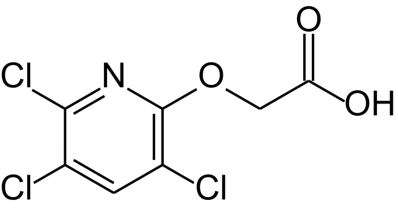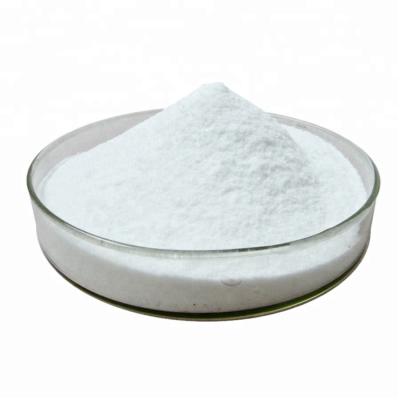Triclopyr Heterocyclic Herbicide
Common name: Triclopyr
Chemical name:
[(3,5,6-trichloropyridin-2-yl)oxy]acetic acid
Molecular formula: C7H4Cl3NO3
The product can be absorbed by the leaves and roots of plants and transferred to the plants to prevent and control weeds in rice fields and wheat.
Common name: Triclopyr
Chemical name:
[(3,5,6-trichloropyridin-2-yl)oxy]acetic acid
Molecular formula: C7H4Cl3NO3
Structural formula:

Molecular weight: 256.47
CAS No. : 55335-06-3
Physical and chemical properties:
The pure product is a white crystalline solid. m.p.148~150℃, decomposition temperature 290℃. The vapor pressure is 1.68×10-4Pa. It is soluble in organic solvents such as ethanol, and its solubility in water at 25°C is 430~440mg/L. The half-life in soil is 46d.
Usage:
The product can be absorbed by the leaves and roots of plants and transferred to the plants to prevent and control weeds in rice fields and wheat. It can also be used to grow botanical gardens (such as oil palm and rubber). Acting on nucleic acid metabolism, causing plants to produce excessive nucleic acid, which turns some tissues into meristems, causing deformities of leaves, stems and roots, depletion of storage materials, embolization or rupture of vascular tissues, and plant death. It is used for weeding and irrigating before afforestation, maintaining fire lines, raising pine trees and forest stand transformation. It can prevent lespede, hazel, mongolica, black birch, linden, aspen, mountain thorn rose, elm, artemisia, bupleurum, platycodon, elm, clematis, mother-in-law, clover, thaw, fern, Maple, willow, pearl plum, mosquito weed, horse celeriac, polygonatum odora, willow-leaf spiraea, red lilac, hypericum, mountain plum, mountain top, bird cherry, sorbus, sweet wormwood.
Submitted successfully
We will contact you as soon as possible




